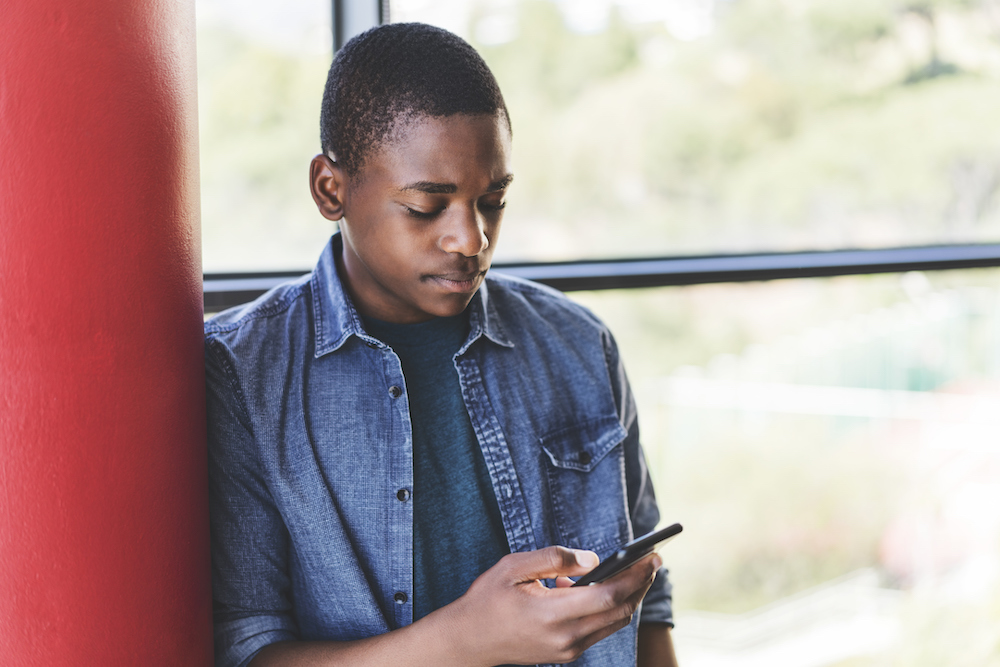Lesson 3: Shopping Safely Online
Before you start the lesson, make sure to read through the lesson overview and the lesson preparation. The Facilitator Guide can also help you prepare.
Lesson Objective
Participants will understand the risks of sharing personal identifiable information over unencrypted websites. They will learn how to protect banking information in shopping applications and what precautions they need to take when completing transactions in person.
Part 1
Encrypted vs. unencrypted websites
In the Security Module, you learned the importance of using encrypted browsers and websites to stay safe online. Let’s explore the concept of encryption a bit further.
What does encryption really mean?
When a website is encrypted, that means the data and information on the site is protected from being viewed by third parties.
When you share and receive information from an encrypted website, that information transaction is secure and only accessible by you and the site you are sharing it with.
An encrypted website does not mean that the site is a reputable company or organization, so you should still be careful when sharing personal information.
If you see https:// at the beginning of a web address (instead of http://), this means the session between the browser you are using and the web server is encrypted. Some web browsers also include a padlock icon at the beginning of an encrypted web address.
How do I spot an unencrypted website?
An unencrypted website does not use a private connection. Typically, you can identify an unencrypted website by its use of “http://” instead of “https://” in the address bar. This means that anyone could potentially view the information you share or receive from that site. Avoid sharing any personal - including financial - information on unencrypted websites.
Some Internet browsers flag potentially dangerous websites. Be extremely cautious with these flagged sites. Don’t enter any personal information, and consider avoiding the site altogether as doing so could infect your device with malware.
Discussion/Self-reflection
- Have you used unencrypted websites in the past?
- What did you use them for?
- Would you still use those same websites now? Why or why not?
Why is it important to use encrypted websites?
Using encrypted websites is an important step in staying safe online. It is especially important to use encrypted websites when sharing financial or personal information.
Encrypted websites help you stay safe while online shopping. Next, you will learn more about safe online shopping.
Shopping safely online
In addition to using encrypted websites, there are other strategies that you can use to stay safe while online shopping:
- Shop only at reputable online stores
If you haven’t heard of a seller before, spend some more time getting to know the business. Small businesses may not share as much information as larger businesses. You may be able to reach out to the shop owner directly to learn more about the products and services to ensure the business is legitimate.Before purchasing something on a new website, do some research and read reviews from other customers to see if the store is reputable.If you are unsure about a seller’s website or advertisement, type the web address of the business directly into your browser.
- Pause before you purchase
Carefully review all purchases before confirming them. Sometimes, websites have cancellation options, but not always. Make sure you carefully review return policies and understand all charges, including any potential fees or shipping costs.
Monitor your financial accounts to make sure there are no fraudulent charges happening without your knowledge. If you see something suspicious, report it right away to protect yourself against further fraud and unwanted charges.
Part 2
Online marketplaces
The internet can be a great place to connect people who are buying and selling personal products. Many social media sites also include online marketplaces that allow users to buy and sell their own items and products.
Strategies for shopping in online marketplaces
Below are some strategies and tips for safely shopping in online marketplaces:
- Be sure to review product-specific guidelines about what is allowed on the marketplace.
- When you sell something in an online marketplace, the listing is often public and searchable by people both on and off the website. Protect your privacy and be mindful of sharing personal details and information, both in the item description and any photographs.
- Be wary of gift card scams and deals that seem too good to be true, particularly for high-cost items like automobiles.
- Be a critical consumer and watch out for counterfeit and recalled items and compare prices before buying an item. Note that if you transfer payment directly into an advertiser’s or seller’s bank account and it’s a fraud, you may not get your money back.
- Checks can be counterfeit so use online payment methods when available.
Shipping and pick up
In some cases, it may be possible to have an item shipped. In other cases, you may need to pick up the item. Make sure you stay safe when meeting someone in person to complete transactions:
- Don’t share personal information like your home address. Instead, meet up in a public, well-lit area during the day.
- Create a meeting plan and share it with a trusted friend or family member.
- Consider asking someone to join you when you make the in-person exchange.
- Bring your fully charged cell phone in case you need to contact someone for help.
Discussion and self-reflection
- Have you bought things from an online store? How did it go?
- Have you bought or sold anything in an online marketplace? How did it go?
- Would you do anything differently after this lesson? Why or why not?
Additional resources
Congrats!
You've finished the lesson
Source:
This content is hosted by Meta and currently includes learning resources drawn from Get Safe Online and Digital Promise under a Creative Commons Attribution-ShareAlike 4.0 International license.



 Previous Lesson
Previous Lesson 




